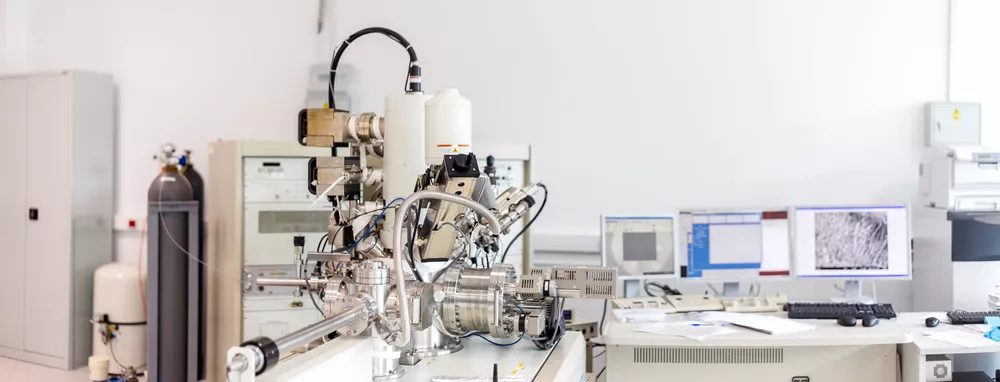In an ever-evolving industrial world where product quality is paramount for business development, maintaining technical competence in testing and calibration laboratories is crucial. The ISO/IEC 17025 standard is a globally recognized framework that enables excellence in testing and calibration.
This article discusses the importance of the standard, its significant elements and the procedures that laboratories must comply with to demonstrate that they operate competently and produce accurate and reliable valid results.
What is ISO/IEC 17025?
It is an international standard developed by ISO (International Organization for Standardization), which establishes the requirements to be met by testing and calibration laboratories. It is international in nature and specifies the requirements of the quality management system and technical competencies necessary for laboratories to produce accurate and precise test results and calibrations.
This document has been developed to promote confidence in laboratory1 operations, ensuring that issued results are universally accepted. Initially introduced in 1999 and subsequently revised, the standard focuses on enhancing the quality and reliability of laboratory processes across various industries.
Meaning of ISO/IEC 17025
It serves several purposes:
- Increase confidence: Accreditation to this standard assures clients and regulatory authorities of the accuracy and reliability of results.
- International recognition: Enables testing and calibration laboratories to be internationally competitive, a significant advantage.
- Continuous improvement: Promotes a culture of continuous improvement through regular assessments and practice updates.
Key components
The standard comprises two main sections
- Management requirements: This section focuses on the operation and effectiveness of the quality management system within the laboratory, covering areas such as document control, corrective actions, and management reviews.
- Technical requirements: These requirements address the factors that determine the correctness and reliability of tests and calibrations performed in the laboratory. It includes aspects such as method validation, equipment calibration, and handling of test items.
Procedure for implementation
The implementation of ISO/IEC 17025 can be a detailed and rigorous process, typically involving the following steps:
Gap analysis
Performing an initial verification to identify areas where the laboratory complies or does not comply with the standard requirements. The gap analysis is conducted in two stages:
- Identification of standard requirements: In the first stage, standard requirements are identified. This involves carefully reading the standard text and understanding its various sections and requirements.
- Assessment of the laboratory’s current status: In the second stage, the laboratory’s current status is assessed. This involves evaluating the laboratory’s current policies, procedures, practices, and records to identify gaps or discrepancies between current laboratory practices and standard requirements.
This analysis aids in planning necessary adjustments to align with this standard.
Development of a project plan
- Create a detailed project plan that provides a guideline of tasks, schedules, responsibilities, and resources needed to achieve accreditation.
- This plan should include training, documentation development, and system updates.
Training and competency development
- Train staff on standard requirements, focusing on quality management principles and technical competencies.
- Develop a competency assessment program to ensure staff can perform tests and calibrations competently.
Document control
- Establish a comprehensive document control system to manage all quality procedures, protocols, and manuals.
- Ensure that all documents are regularly reviewed, updated and accessible to relevant personnel.
Implementation of the Quality management system
- Implement the quality management system according to ISO/IEC 17025 requirements.
- Integrate quality management practices into the daily operations of the testing and calibration laboratory.

Discover ISO/IEC 17025 | Standard for testing and calibration laboratories
Method validation and equipment calibration
- Validate test methods to ensure that they are suitable for the intended use.
- Regularly calibrate equipment to maintain accuracy and reliability of results.

Internal audits and management reviews
- Conduct internal audits to evaluate the effectiveness of the implemented system.
- Conduct management reviews to ensure continual improvement and compliance with the standard.
Corrective and preventive actions
- Implement a system to identify, document and address nonconformities.
- Develop preventive actions to mitigate potential deviations before they occur.
Accreditation process
- Select a suitable accreditation body.
- Undergo a thorough assessment by the accreditation body to confirm compliance with ISO/IEC 17025.
Continuous improvement
- Foster a culture of continuous improvement by regularly updating processes and training staff.
- Continuously monitor performance and implement improvements based on feedback and audit findings.
Conclusions
Implementing ISO/IEC 17025 enhances operational efficiency and reliability of a testing and calibration laboratory, which is crucial in a world where scientific and technological advancements occur rapidly. By adhering to the structured processes outlined by this standard, laboratories not only improve their testing and calibration capabilities but also elevate their position in the market and ensure compliance with international quality standards.
This standard enhances the quality of laboratory services and ensures that results are universally accepted and reliable, supporting safety, legality, and effectiveness of products and services across numerous fields. Through meticulous planning, dedicated training, and continuous improvement, laboratories can achieve and maintain accreditation, thus ensuring technical competence and quality assurance in their operations.
References
- International Organization for Standardization. ISO/IEC 17025: General requirements for the competence of testing and calibration laboratories; Accessed 29 April 2024.
- SGC LAB. What is ISO/IEC 17025 and how to implement it in a testing or calibration laboratory; Accessed on April 30, 2024; https://sgc-lab.com/implantar-sistema-17025/.


